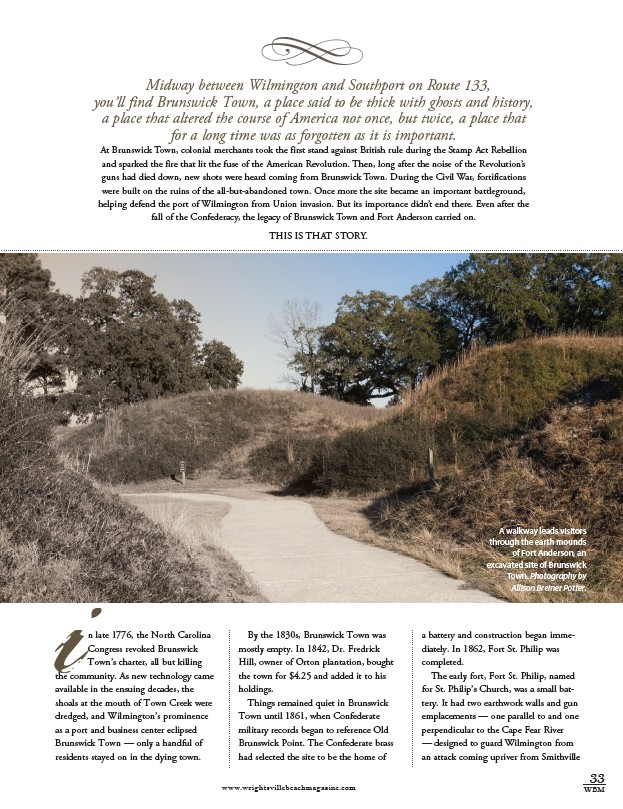
33
www.wrightsvillebeachmagazine.com WBM
in late 1776, the North Carolina
Congress revoked Brunswick
Town’s charter, all but killing
the community. As new technology came
available in the ensuing decades, the
shoals at the mouth of Town Creek were
dredged, and Wilmington’s prominence
as a port and business center eclipsed
Brunswick Town — only a handful of
residents stayed on in the dying town.
By the 1830s, Brunswick Town was
mostly empty. In 1842, Dr. Fredrick
Hill, owner of Orton plantation, bought
the town for $4.25 and added it to his
holdings.
Things remained quiet in Brunswick
Town until 1861, when Confederate
military records began to reference Old
Brunswick Point. The Confederate brass
had selected the site to be the home of
a battery and construction began immediately.
In 1862, Fort St. Philip was
completed.
The early fort, Fort St. Philip, named
for St. Philip’s Church, was a small battery.
It had two earthwork walls and gun
emplacements — one parallel to and one
perpendicular to the Cape Fear River
— designed to guard Wilmington from
an attack coming upriver from Smithville
E
Midway between Wilmington and Southport on Route 133,
you’ll find Brunswick Town, a place said to be thick with ghosts and history,
a place that altered the course of America not once, but twice, a place that
for a long time was as forgotten as it is important.
At Brunswick Town, colonial merchants took the first stand against British rule during the Stamp Act Rebellion
and sparked the fire that lit the fuse of the American Revolution. Then, long after the noise of the Revolution’s
guns had died down, new shots were heard coming from Brunswick Town. During the Civil War, fortifications
were built on the ruins of the all-but-abandoned town. Once more the site became an important battleground,
helping defend the port of Wilmington from Union invasion. But its importance didn’t end there. Even after the
fall of the Confederacy, the legacy of Brunswick Town and Fort Anderson carried on.
This is that story.
A walkway leads visitors
through the earth mounds
of Fort Anderson, an
excavated site of Brunswick
Town. Photography by
Allison Breiner Potter.